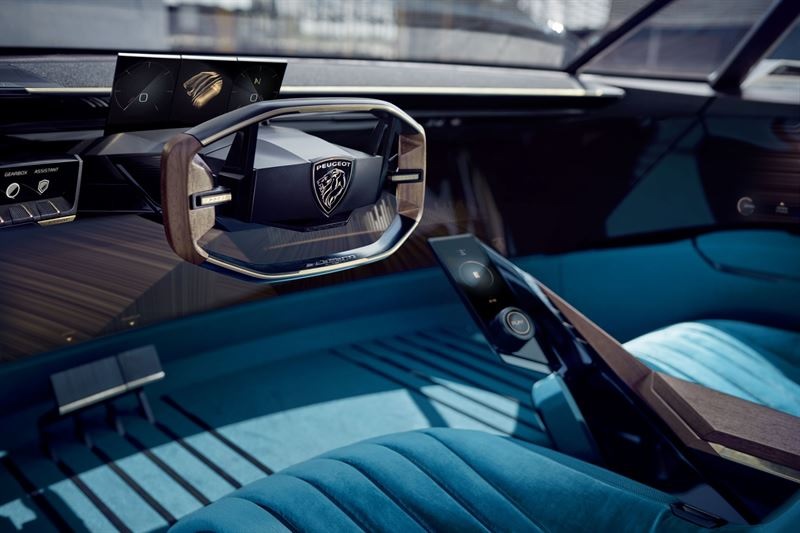Qt
The evolution of the in-vehicle experience has been rapid and dramatic: it was less than two decades ago when the driver's only conduit to the outside world was the vehicle's radio, but the ubiquitous connectivity enabled by the IoT means today's vehicles are constantly communicating with their external environments. This has led to automotive original equipment manufacturers (OEMs) and Tier 1 suppliers realizing that connected vehicles' interiors have the potential to deliver an immersive digital experience comparable to consumers' smartphones. And while this presents considerable opportunity, there are several development challenges that OEMs must consider in order to achieve success.

The Rise of the Digital Cockpit
Consumers are demanding immersive digital experiences in every element of their daily life — from mobile phones to home entertainment systems and appliances to cars. Because of this, the automotive industry has increasingly moved away from the traditional vehicle dashboard's single static display to a multi-screen approach, delivering a wide range of services and applications. Drivers' expectations for the in-car experience have therefore been heightened, and responding to the increased digital requirements is a much different beast than delivering better cup holders.
The automotive industry is increasingly referring to these highly advanced vehicle interiors as the "digital cockpit" — and every manufacturer is investing heavily to ensure their digital cockpit delivers the best possible in-vehicle experience on the market.
Inside the Digital Cockpit
Essentially, a digital cockpit delivers a digital experience within a vehicle through a variety of screens and means of input — or to put it more simply, multiple screens in place of a traditional instrument cluster. The core elements of a digital cockpit include multiscreen displays (digital instrument clusters that replace analog gauges behind the steering wheel), head-up displays (HUDs, which are situated behind the windshield and provide instrument data to the driver), and in-vehicle infotainment (IVI) systems and rear-seat entertainment systems (or even copilot screens, which aren't yet in production vehicles but are being prototyped).
Consumers are understandably intrigued by digital cockpits — as they align with our desire for an increasingly connected life — but understanding all the tools and apps at the driver's disposal can be overwhelming. As a result, manufacturers must focus on building digital cockpits that are well-designed: robust in their capabilities, but also highly intuitive and easy-to-use. But given the technological complexity of digital cockpits, this is no minor challenge.
Challenges in Digital Cockpit Development
Considering that digital instrument clusters are a key element of the digital cockpit, the screens, displays and user interfaces (UIs) that comprise these instrument clusters play a crucial role in the overall driver experience. Meanwhile, the displays in digital instrument clusters must address several stringent design and technical requirements to enable the driver to safely use them. These two factors combine to create significant development challenges for OEMs — as delivering a cohesive yet immersive user experience across the entire digital cockpit is difficult at best.
In designing and developing their digital cockpits, OEMs must consider the following:
■ Balancing competing goals: In developing their digital cockpits, OEMs need to strike a very delicate balance between design, cost and performance. OEMs are tasked with delivering an immersive and consistent user experience in as little development time as possible, while aiming to lower costs throughout every step of the process
■ Functional safety: OEMs developing safety-critical systems such as instrument clusters need functionally safe software that complies with automotive industry standards. As a result, OEM developers need a specialized, stable process to ensure their user interfaces (UIs) and devices comply with functional safety standards
■ Reducing complexity: OEMs face considerable software complexity in developing their digital cockpits, as they must integrate a wide variety of elements including base operating systems, virtualization technologies, application development frameworks, and automotive-specific features such as diagnostic and radio/audio features
Technologies exist today that aim to streamline the software development process for digital cockpits, and OEMs would be wise to evaluate whether those technologies are viable solutions for their purposes.
The Digital Cockpit: Opportunity Awaits
Given consumers' increasing appetite for constant connectivity across every aspect of their lives, digital cockpits are quickly becoming one of the most important elements of today's and tomorrow's connected vehicles. OEMs, then, must focus on building digital cockpits that appeal to the consumer's connected sensibilities, and continue to keep the driver engaged with immersive — yet useful and safe — features and services.
The challenges associated with digital cockpit development are significant, to be sure, but the OEMs that are able to navigate them will be primed for success in today's connected age.




